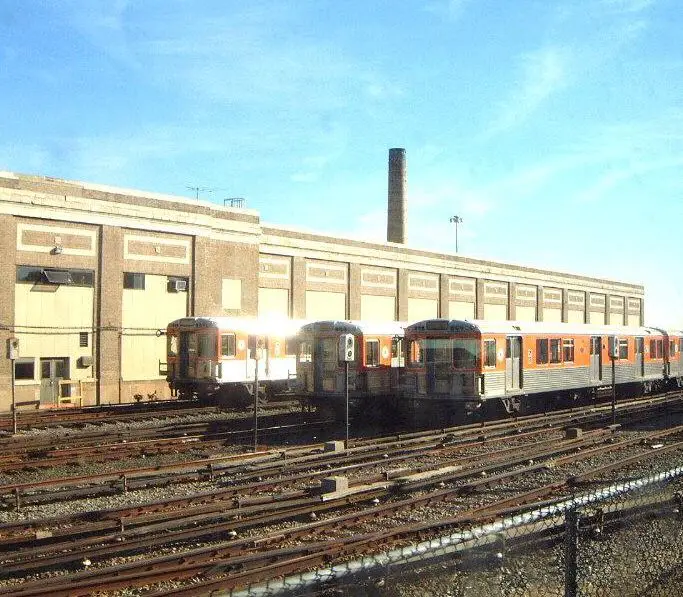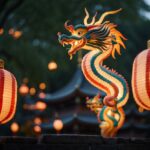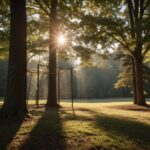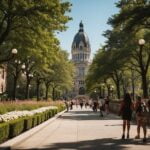Nestled in the North Philadelphia region, Olney-Oak Lane is a vibrant and culturally diverse area with a rich history and an eclectic mix of neighborhoods. From the quaint charm of East Oak Lane to the bustling energy of Olney, each neighborhood adds a unique piece to the district’s cultural mosaic. With its historical significance and diverse demographics, Olney-Oak Lane is a testament to Philadelphia’s multicultural charm and its potential for future growth.
This region’s unique neighborhoods, each with its own distinct identity and history, contribute significantly to the area’s cultural and demographic diversity. Coupled with a range of notable features and attractions that reflect both the district’s rich past and promising future, Olney-Oak Lane stands out as an integral part of Philadelphia’s urban landscape.
Neighborhoods
The Olney-Oak Lane section of Philadelphia is an eclectic mix of distinct neighborhoods, each offering a unique slice of city life. The vibrancy of these neighborhoods stems from their rich history, the cultural diversity of their residents, and their individual architectural styles. From East Oak Lane’s Victorian mansions and Feltonville’s bustling commercial corridors to West Oak Lane’s serene residential streets, each neighborhood presents its own unique character and charm. This section provides an overview of each neighborhood, delving into their history, notable features, and what makes them special within the Olney-Oak Lane section and the broader Philadelphia area.
East Oak Lane
East Oak Lane, distinguished by its tree-lined streets and grand Victorian homes, paints a picture of tranquility and architectural beauty. The neighborhood was one of the first developments outside of Philadelphia’s city limits in the late 19th century, attracting affluent families with its idyllic setting and elegant housing options.
Notable landmarks, such as the All Saints Episcopal Church and the Oak Lane Presbyterian Church, further accentuate East Oak Lane’s historic charm. The area also boasts of an array of educational institutions, including Central High School, one of the oldest public high schools in the country. East Oak Lane’s reputation as a quiet, residential neighborhood does not preclude it from offering an array of dining and shopping options, with quaint boutiques and family-owned restaurants speckling its main streets.
While it has grown and modernized over the years, East Oak Lane continues to retain its old-world charm and tight-knit community feel, making it a sought-after neighborhood in the Olney-Oak Lane area. Its appeal lies not just in its physical beauty, but also in the strong sense of community that permeates its streets and homes.
Feltonville
Feltonville is a vibrant and dynamic neighborhood known for its cultural diversity. In recent years, the area has become a melting pot, home to a variety of immigrant communities, including Latino, Asian, and African residents, each adding their own unique cultural flavors to the neighborhood.
This cultural vibrancy is reflected in the area’s bustling commercial corridors that feature a variety of ethnic eateries, specialty grocery stores, and businesses. Moreover, Feltonville is home to the Tarken Ice Rink and Rec Center, a popular local gathering spot that offers a range of recreational activities. This neighborhood, with its diversity and community-oriented spirit, epitomizes the multicultural ethos that defines Olney-Oak Lane.
Despite the changes and growth over the years, Feltonville has managed to retain its close-knit community feel. The residents are known for their warm hospitality and strong sense of community, contributing to Feltonville’s reputation as a welcoming and inclusive neighborhood in the Olney-Oak Lane area.
Fern Rock
Fern Rock, initially a summer retreat for Philadelphia’s wealthy residents, is now a bustling residential neighborhood that seamlessly combines history, culture, and urban convenience. The neighborhood is home to the Fern Rock Transportation Center, a major transit hub in Philadelphia, making it an ideal location for commuters.
Fern Rock also houses several historical landmarks, including the Tabor Home for Needy and Destitute Children and the Fern Rock Row, a series of unique Victorian row houses. Additionally, the neighborhood’s namesake, the Fern Rock Park, is a popular spot for outdoor activities and offers beautiful natural scenery amidst the urban landscape.
In recent years, Fern Rock has experienced a revival, with numerous community development initiatives aiming to preserve its historical charm while promoting growth and diversity. This balance between past and present makes Fern Rock a unique and appealing neighborhood in the Olney-Oak Lane area.
Koreatown
As its name suggests, Koreatown is the heart of the Korean community in Philadelphia. Located within the larger neighborhood of Olney, this vibrant enclave is rich in cultural tradition and offers an authentic slice of Korea in the heart of the city. Residents and visitors alike are drawn to its array of Korean restaurants, markets, and businesses.
Koreatown is celebrated for its annual cultural festivals, notably the Chuseok (Korean Thanksgiving) and Seollal (Korean New Year), which bring together community members in a vibrant display of traditional music, dance, and food. These events serve as an important cultural bridge, fostering understanding and appreciation of Korean heritage among the broader Philadelphia community.
Despite its distinctly Korean flavor, Koreatown is also a picture of diversity, home to many different cultural and ethnic groups. This blend of cultures contributes to a lively, diverse neighborhood atmosphere that’s both welcoming and stimulating, making Koreatown a standout neighborhood in the Olney-Oak Lane section of Philadelphia.
Logan
Logan is a residential neighborhood in the Olney-Oak Lane section known for its historic character and community spirit. At the center of Logan stands the Logan Circle, a popular landmark adorned with beautiful fountains and home to the renowned Swann Memorial Fountain.
Historically a working-class neighborhood, Logan has undergone significant transformation over the years, evolving into a diverse and vibrant community. The area’s streets are lined with well-kept row houses and punctuated by small, locally-owned businesses that contribute to its unique charm and appeal.
Community engagement is strong in Logan, with residents actively involved in local initiatives aimed at preserving the neighborhood’s character and enhancing its quality of life. This strong sense of community, coupled with its rich history and convenient location, make Logan a desirable neighborhood within the Olney-Oak Lane area.
Melrose Park
Melrose Park is a quaint neighborhood in the Olney-Oak Lane area, prized for its beautiful old homes, quiet streets, and mature trees. The community exudes a small-town feel, while still being within reach of the city’s conveniences. The area is particularly appealing to families due to its reputation for safety and the presence of good schools.
Historically, Melrose Park was a prosperous community and this is reflected in the beautiful Victorian homes that grace its streets. Walking through the neighborhood, one is struck by the well-preserved architecture and the sense of history that pervades the area. The Melrose Park Neighbors Association works tirelessly to preserve this unique character and to foster a sense of community.
The neighborhood hosts several annual events, including a jazz festival and a 5K run that draws participants from across the city. Melrose Park is a testament to the city’s rich history and its continual progress, embodying the charm and resilience that characterizes Philadelphia as a whole.
Ogontz
Ogontz, located at the northern tip of Philadelphia, is a community that takes pride in its deep roots and neighborhood spirit. Named after the Ogontz Creek, which was itself named after a Native American chief, this neighborhood is steeped in history and culture.
Residential in nature, Ogontz is known for its row houses and twin homes that range from well-preserved early 20th-century dwellings to more modern constructions. Despite the urban setting, the neighborhood exudes a distinct suburban feel with its quiet streets and ample green spaces.
Ogontz Avenue, the neighborhood’s main thoroughfare, is a bustling commercial street lined with shops, eateries, and businesses. It also hosts several community events throughout the year, enhancing the neighborhood’s sense of unity and togetherness. Ogontz is truly a testament to the power of community spirit and neighborhood pride.
Olney
Olney, located in the North Philadelphia area, is a neighborhood rich with cultural diversity and vibrant history. It was originally settled by German immigrants in the 18th century and has since evolved into a multicultural hub, reflecting the evolving face of Philadelphia. Today, it is known for its diversity and the vibrancy that its many cultures bring.
The residential areas of Olney are characterized by row homes, many of which retain their original early-20th-century charm. The neighborhood is highly walkable, with many amenities and conveniences easily accessible to residents. The well-organized community groups actively work to ensure the safety and well-being of its residents, enhancing the sense of community within Olney.
Olney is also home to a thriving commercial district along North 5th Street, known locally as “the Fifth Street Shoppes.” Here, locally owned businesses and international cuisine reflect the area’s diversity, providing residents with a variety of shopping and dining options. The community spirit, multiculturalism, and resilience of Olney are hallmarks of this unique Philadelphia neighborhood.
West Oak Lane
West Oak Lane, located in the northernmost part of Philadelphia, is a vibrant community known for its rich culture, impressive homes, and strong sense of community. The neighborhood was originally developed in the early 20th century as a suburban-style alternative to city living and still retains much of that charm.
One of the distinguishing characteristics of West Oak Lane is its architecture, featuring a mix of row homes, twins, and single-family homes. Many of these homes have large yards, which is somewhat unusual in Philadelphia, adding to the neighborhood’s appeal. The well-maintained streets and community cleanliness efforts make West Oak Lane a desirable place to live.
West Oak Lane is also famous for its annual Jazz and Arts festival, which draws people from all over the city and beyond. It boasts a vibrant arts scene, with several galleries and music venues contributing to the area’s cultural richness. With its robust community spirit and cultural appeal, West Oak Lane is a gem in the city of Philadelphia.
History
The history of the Olney-Oak Lane area of Philadelphia is rich and multifaceted, tracing its origins back to the 17th century. Originally a farming area, it developed into a suburb as the city of Philadelphia grew and expanded in the 18th and 19th centuries. As transportation infrastructure improved, including the development of the railway system, more people moved to the area for its quiet, suburban feel while still being in close proximity to the city center.
In the early 20th century, Olney-Oak Lane experienced a population boom, attracting immigrants from various parts of Europe. Neighborhoods like East Oak Lane, Feltonville, and Logan grew rapidly, developing their distinct identities. Olney became known as a bustling commercial hub, with the area around 5th Street becoming a major shopping district. West Oak Lane, with its larger homes and spacious yards, developed into a desirable residential area.
In the latter part of the 20th century, Olney-Oak Lane saw a significant demographic shift, with an influx of African American and later Hispanic and Asian residents, adding to the multicultural character of the area. Despite the various challenges over the years, including economic downturns, the community has shown resilience and continues to evolve, with revitalization efforts aimed at preserving its historic charm while adapting to the needs of a changing population.
Demographics
The Olney-Oak Lane area is home to a diverse population, reflecting the multicultural character of Philadelphia. The area’s rich history of immigration has led to a mixture of various ethnic and racial groups. As of the latest census, the area has a significant African American population, followed by Hispanic, White, and Asian residents.
There’s also a diversity in terms of age demographics in Olney-Oak Lane, with a mix of both young families, professionals, and older, long-term residents. This vibrant mixture contributes to the community’s dynamism and cultural richness.
The area also boasts a variety of socioeconomic backgrounds, contributing to its vibrant and diverse character. Community organizations and residents in Olney-Oak Lane are actively working together to ensure equitable development and opportunities for all residents, contributing to the area’s sense of unity and community spirit.
V. Notable Features
Olney-Oak Lane Philadelphia’s notable features lie in its architectural beauty, cultural diversity, and strong community spirit. The area is known for its unique residential architecture, featuring a range of styles from Victorian mansions in Oak Lane to brick row homes in Olney. Many of these buildings have been meticulously maintained, preserving the area’s historical charm.
Cultural diversity is a hallmark of Olney-Oak Lane. This is best represented in the area’s culinary scene. In Feltonville and Olney, one can find a wide range of international cuisine from Latin American to Asian, reflecting the diverse cultures of the residents. Koreatown, as the name suggests, is a hub of Korean culture and cuisine in Philadelphia.
Another notable feature is the area’s commitment to education and community services. The Central High School, one of the oldest public high schools in the nation, is located in this area. The Olney Recreational Center and the Oak Lane Library are two examples of the many community facilities that provide valuable services to residents.
VI. Conclusion
Olney-Oak Lane Philadelphia, with its unique blend of history, diversity, and community spirit, truly stands out as a distinctive section of Philadelphia. Its range of neighborhoods each offer a unique experience, from the lively commercial center in Olney to the serene residential streets in West Oak Lane.
This area’s story is but a chapter in the broader narrative of Philadelphia. For those seeking to delve deeper into the city’s rich tapestry, refer to “Discovering Philadelphia: A Comprehensive Guide to the City of Brotherly Love.” This resource offers a more extensive exploration of the city, its history, neighborhoods, and attractions, serving as an invaluable guide to residents and visitors alike.






4 thoughts on “Olney-Oak Lane Philadelphia: A Mosaic of Cultures, Histories, and Unique Neighborhoods”